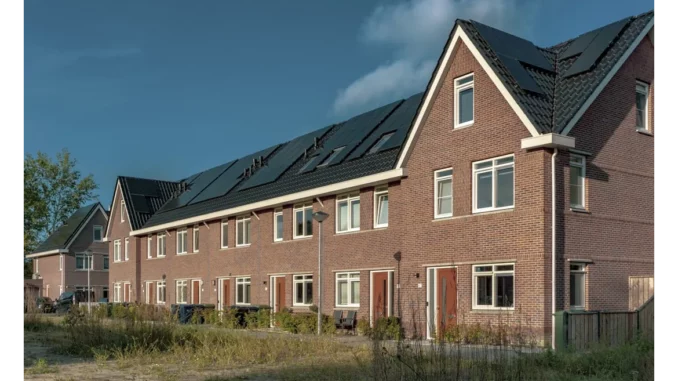
In the quaint village of Wheathampstead, UK, a pioneering residential property known as 62 Kimpton Rd stands as a testament to sustainable living. This net-zero energy home, constructed in 2015, is a shining example of modern, environmentally conscious architecture, setting a benchmark for energy efficiency and inspiring future sustainable building projects. As the construction industry increasingly seeks to address the challenges posed by climate change, 62 Kimpton Rd provides a practical demonstration of what can be achieved through innovative design and technology.
Successful low-energy building design hinges on careful planning. Focus360 Energy can help.
The concept of net-zero energy is central to understanding the significance of 62 Kimpton Rd. Net-zero energy buildings are meticulously designed to produce as much energy as they consume over the course of a year, effectively minimising reliance on fossil fuels and reducing carbon emissions. This is achieved through a synergy of energy efficiency measures and renewable energy technologies, creating homes that are not only environmentally friendly but also cost-effective and comfortable for their inhabitants.
62 Kimpton Rd exemplifies these principles through its innovative design and cutting-edge technology. The property is equipped with a 31-panel photovoltaic (PV) array that harnesses solar energy to power the home. This system is complemented by a ground source heat pump, driven by thermal piles, which caters to all heating and hot water requirements. Moreover, a mechanical ventilation and heat recovery system ensures optimal indoor air quality while conserving energy. The home’s superior insulation further reduces energy loss, enhancing its overall efficiency. During its construction, sustainable materials were prioritised, adhering to circular economy design principles, which aim to minimise waste and environmental impact. This commitment to sustainability was recognised when the property was awarded the Building Futures Award 2016 for the Most Sustainable Construction Project by the UK Green Building Council.
The energy performance of 62 Kimpton Rd is noteworthy. With an Energy Use Intensity (EUI) of 29.87 kWh/m²/yr and an Onsite Renewable Production Intensity (RPI) of 30.52 kWh/m²/yr, the property achieves a net-zero operational carbon status. This achievement was verified in 2017, confirming the home’s capability to generate as much energy as it consumes annually. Beyond its immediate environmental benefits, 62 Kimpton Rd serves as a model for sustainable residential construction, illustrating that energy-efficient homes are not only feasible but increasingly desirable. As awareness of environmental issues grows, the demand for such properties is likely to rise, paving the way for a greener future.
However, the journey towards net-zero energy homes is not without its challenges. The initial costs associated with renewable energy systems and sustainable materials can be substantial, potentially deterring some homeowners. Nevertheless, as technology progresses and economies of scale reduce costs, net-zero homes are expected to become more accessible. The long-term savings on energy bills, coupled with increased comfort and the satisfaction of contributing to a sustainable world, offer compelling incentives. Additionally, the design and construction of net-zero homes necessitate specialised knowledge and expertise, underlining the need for continued investment in education and training within the industry.
The broader impact of 62 Kimpton Rd extends beyond its immediate surroundings. As a beacon of what is possible when sustainability is prioritised in residential construction, it sets a new standard for what homes can achieve. By embracing renewable energy, energy efficiency, and sustainable materials, the property offers a glimpse into a future where sustainable living is the norm rather than the exception. As the world grapples with the challenges of climate change, the success of 62 Kimpton Rd underscores the potential of net-zero homes to transform the housing market. This shift could drive innovation and encourage the widespread adoption of sustainable building practices, providing a blueprint for a more sustainable and resilient future.


Be the first to comment